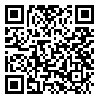Volume 8, Issue 2 (3-2021)
jbrms 2021, 8(2): 27-34 |
Back to browse issues page
Download citation:
BibTeX | RIS | EndNote | Medlars | ProCite | Reference Manager | RefWorks
Send citation to:



BibTeX | RIS | EndNote | Medlars | ProCite | Reference Manager | RefWorks
Send citation to:
Homayounpour G, Hosseini M, Keshavarzi F. Allele frequency of DYS393 and DYS19 in Iranian Kurdish men. jbrms 2021; 8 (2) :27-34
URL: http://jbrms.medilam.ac.ir/article-1-538-en.html
URL: http://jbrms.medilam.ac.ir/article-1-538-en.html
Department of Genetics, Payame Noor University, P,O,Box 19395-3697, Tehran, Iran
Abstract: (2316 Views)
Introduction: Repetitive Y sequences in evolutionary studies and tracing of human migration are useful indicators. This study aimed to investigate the allelic frequency and differentiation of DYS393 and DYS19 markers in 200 Iranian Kurdish men.
Materials and Methods: The blood samples were collected from 200 unrelated Kurdish men that three generations of them were Kurd and lived in four Kurdish provinces of Iran (Kurdistan, Kermanshah, Ilam, and West Azerbaijan). After DNA extraction, two markers were evaluated using the Monoplex PCR technique, and then alleles were separated for each marker using the Real-time PCR technique. The obtained data were analyzed by HRM diagram and the final statistical calculations were analyzed by Genalex software (version 4.6).
Results: The genetic diversity of DYS393 and DYS19 markers were 0.69, 0.607 and the number of alleles were 5 and 4 for each of the markers, respectively. Also, the most allele frequency belonged to the alleles 14 and 12 in DYS393 and DYS19 markers, respectively. 12, 9, 8 and 7 haplotypes were belong to Kermanshah, Kurdistan, Azerbaijan and Ilam, respectively, and 2, 1 and 1 specific haplotypes were also observed in Kermanshah, Kurdistan and Azerbaijan provinces, respectively. In addition, Kermanshah province has the highest amount of N_e and H_e, therefore, it has the most influential haplotypes in the population.
Conclusion: The loci studied in the Kurdish population of the west of Iran has a high haplotype diversity and has close similarity with the Caucasian Kurdish immigrants, the Iranian population and the Turkish Kurds. The desired loci can also be used in forensic programs.
Materials and Methods: The blood samples were collected from 200 unrelated Kurdish men that three generations of them were Kurd and lived in four Kurdish provinces of Iran (Kurdistan, Kermanshah, Ilam, and West Azerbaijan). After DNA extraction, two markers were evaluated using the Monoplex PCR technique, and then alleles were separated for each marker using the Real-time PCR technique. The obtained data were analyzed by HRM diagram and the final statistical calculations were analyzed by Genalex software (version 4.6).
Results: The genetic diversity of DYS393 and DYS19 markers were 0.69, 0.607 and the number of alleles were 5 and 4 for each of the markers, respectively. Also, the most allele frequency belonged to the alleles 14 and 12 in DYS393 and DYS19 markers, respectively. 12, 9, 8 and 7 haplotypes were belong to Kermanshah, Kurdistan, Azerbaijan and Ilam, respectively, and 2, 1 and 1 specific haplotypes were also observed in Kermanshah, Kurdistan and Azerbaijan provinces, respectively. In addition, Kermanshah province has the highest amount of N_e and H_e, therefore, it has the most influential haplotypes in the population.
Conclusion: The loci studied in the Kurdish population of the west of Iran has a high haplotype diversity and has close similarity with the Caucasian Kurdish immigrants, the Iranian population and the Turkish Kurds. The desired loci can also be used in forensic programs.
Type of Study: Research |
Subject:
Genetics
Received: 2020/02/25 | Accepted: 2020/08/30 | Published: 2021/03/2
Received: 2020/02/25 | Accepted: 2020/08/30 | Published: 2021/03/2
| Rights and permissions | |
 |
This work is licensed under a Creative Commons Attribution-NonCommercial 4.0 International License. |





